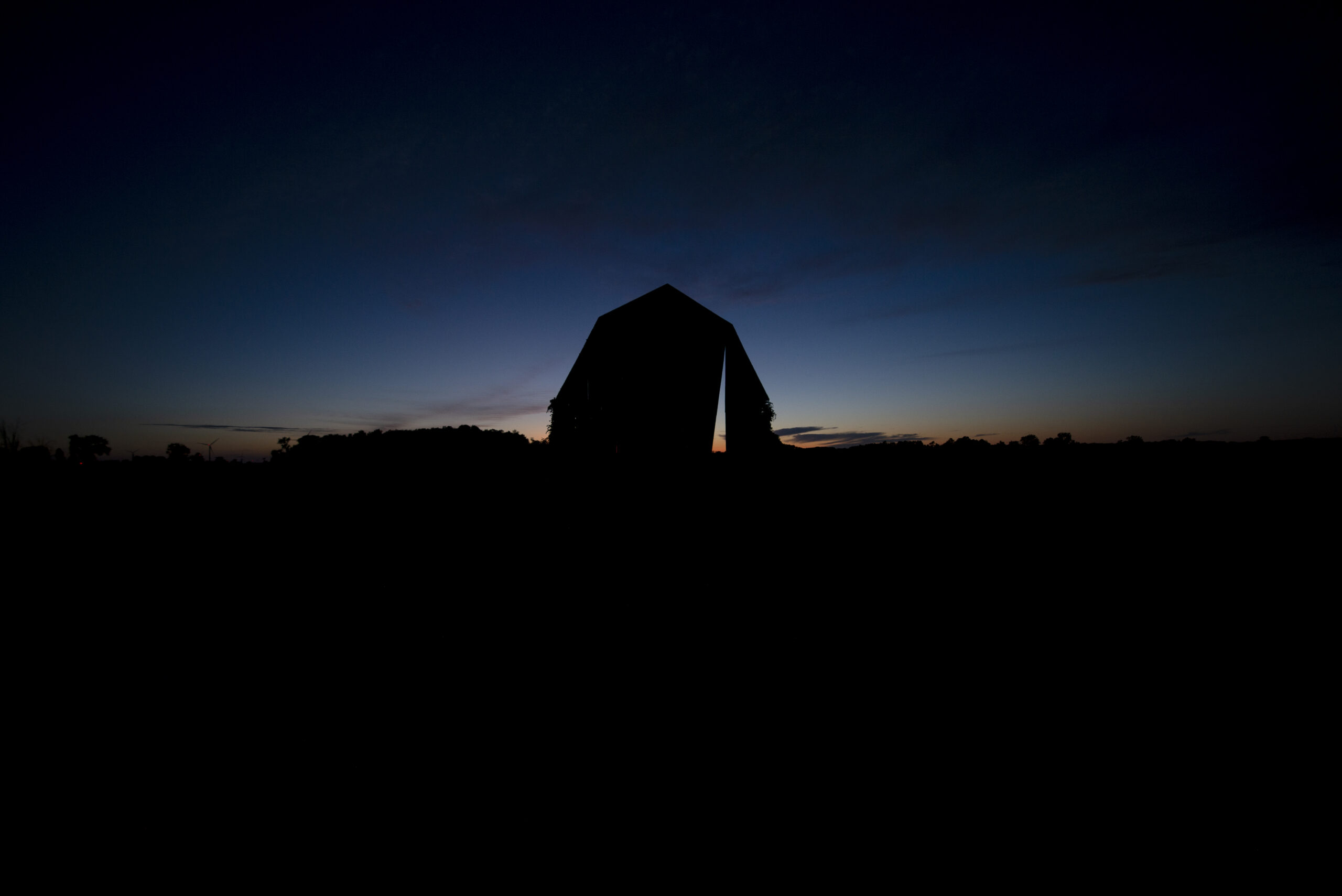Part rural rejuvenation and part public art project, a series of barns around Port Austin, Michigan, at the topmost tip of the mitten-shaped state’s “thumb,” have been repurposed and revived into massive art installations. Ranging from architectural interventions to large-scale murals, they feature work by artists that provoke joy in the unexpected.
Jim Boyle, founder of Public Pool, a cooperative art space in the Detroit suburb of Hamtramck, also catalyzed an initiative called 53 North, which references Michigan state highway 53 that connects Detroit to the Lake Huron town of Port Austin. Boyle was born in Detroit, then lived in Port Austin for 18 years.
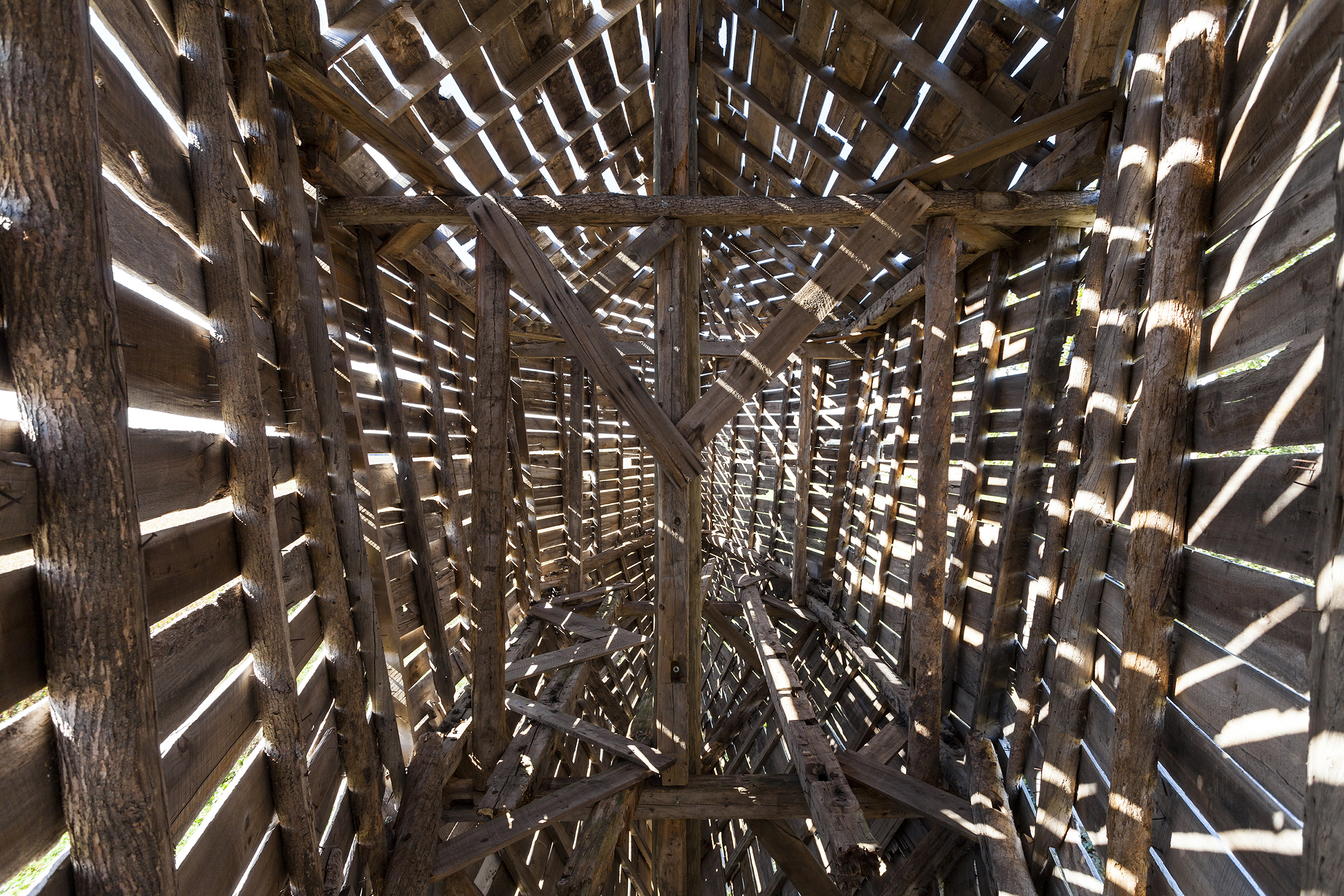
He then returned to Detroit, where he currently lives, and continued to drive the route regularly to visit family. “I became struck both by the number of early twentieth-century barns in decline in the Thumb and their eerie similarity to the abandoned industrial remnants of the economic wrecking ball that hit Detroit,” he said in an article for Detroit Research.
Boyle was struck by the parallel economic impacts on both agriculture and manufacturing over several decades, starting in the mid-20th century, which took a toll on local communities and the physical environment. While industrial buildings were shuttered in Detroit, farm buildings gradually fell into disrepair around the countryside. But all of these disused barns gave him an idea: “In Detroit, I loved how artists were responding to economic parallels in urban areas, and thought it would be interesting to do the same in the Thumb.”
Constructing New Views of Rural Michigan
Conceived by 53 North in collaboration with Greater Port Austin Art & Placemaking, the Barn Art project reimagines the iconic American farm structure into striking works of art. So far, three projects have been completed, each with a unique, site-specific take on its surroundings.
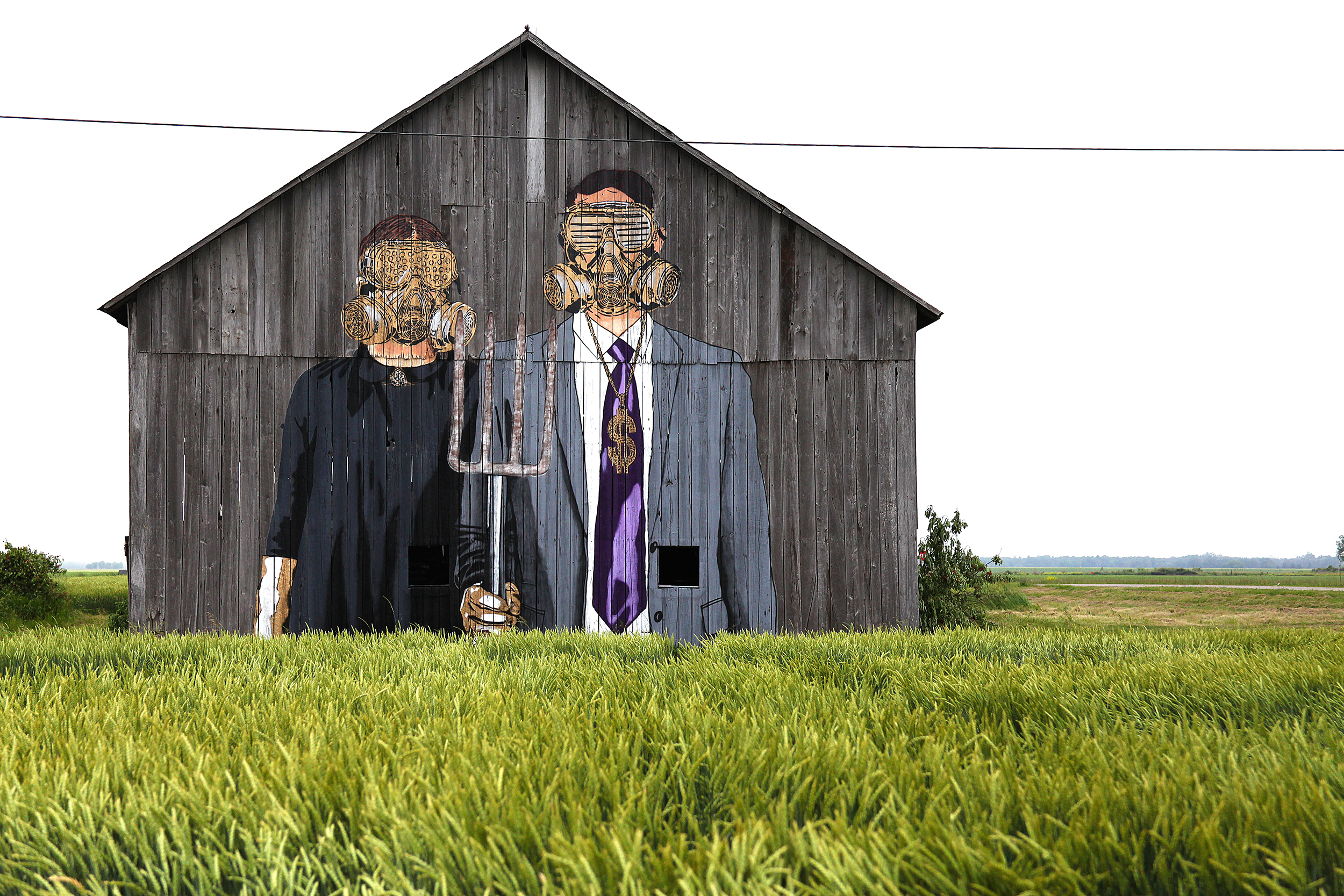
In 2013, Boyle invited Steve and Dorota Coy, who work as The Hygienic Dress League (HDL), to paint a monumental mural called Art in the Public Realm on two sides of a barn on Mark Ziel’s dairy farm. Unlike the other two structures that have been transformed during the course of this project, this barn is still used to store hay and equipment, and its view from the road regularly draws visitors who pass by it on their way into town.
“Every once in a while I’ll stop by and talk to the people who take pictures of it,” Ziel said during a conversation with the artists. “They say, boy, that’s fading a little bit, is there anything you can do to redo that?” He takes pride in the artwork’s ability to spark conversation and consider pressing issues for rural communities and farmers.
HDL takes the form of a conceptual corporation, which “proudly provides no products or services,” they wrote in a statement about the project. The status of the corporation is used as an art medium to critique contemporary society and its contradictions, and in this case, it considers how big business often presents big challenges for America’s farmers. One side of the piece, titled “Walden,” portrays a giant pigeon with the HDL logo, and the other, “American Gothic,” spoofs Grant Wood’s seminal 1930 painting of the same name, featuring two figures wearing gas masks and holding a pitchfork.
JIM BOYLE, PUBLIC POOL & 53 NORTH“In Detroit, I loved how artists were responding to economic parallels in urban areas, and thought it would be interesting to do the same in the Thumb.”

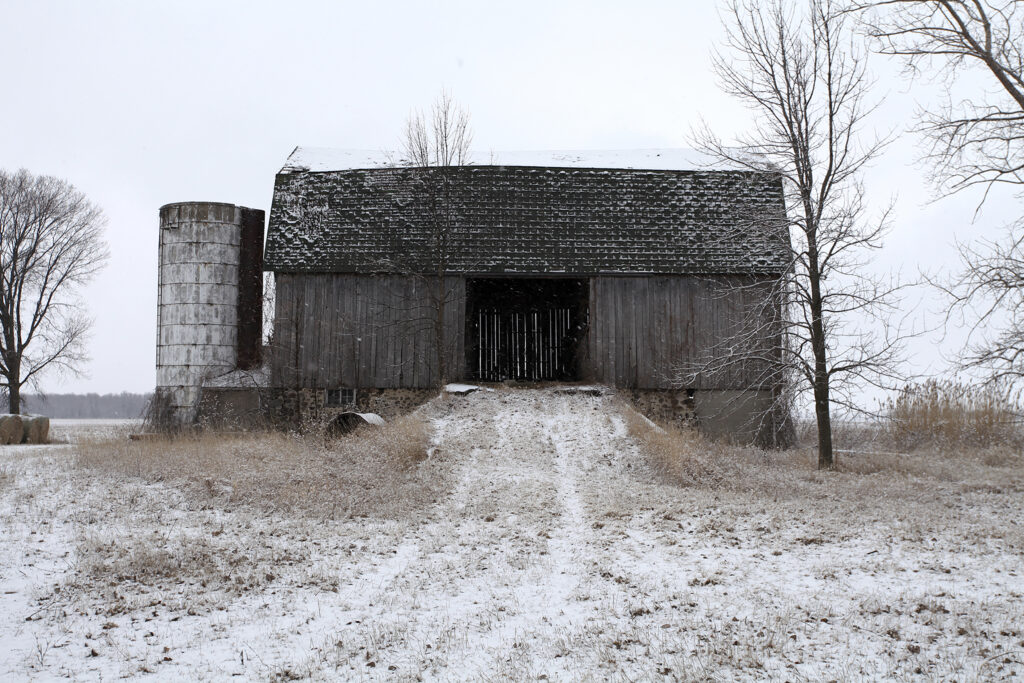


Architectural Interventions
The next two installations tapped into the materials and architectural features of the barns themselves. The project in 2015 took a reconstructive approach, which began by first completely demolishing a barn donated by local residents Bill and Lorraine Goretski. “Scott Hocking described his long-time desire to deconstruct a barn, turn it upside down, and build what he initially conceived of as an ark out of its original materials,” Boyle says.
Celestial Ship of the North (Emergency Ark), also known as the “Barnboat,” was built over the course of three months, utilizing the beams and boards of the collapsing 1890s building. The form was inspired by archaic sea vessels and myths of deluge and destruction, standing sentry in a family farm where consistent winds, weather, and time will eventually continue its decay.
CATIE NEWELL, ARTIST, ALIBI STUDIO“The original barn, a recognizable and nostalgic form in the landscape, was left unattended but cherished as an old building familiar to the area … As it was, it needed structural maintenance and attention to save it from crumbling in the near future.”
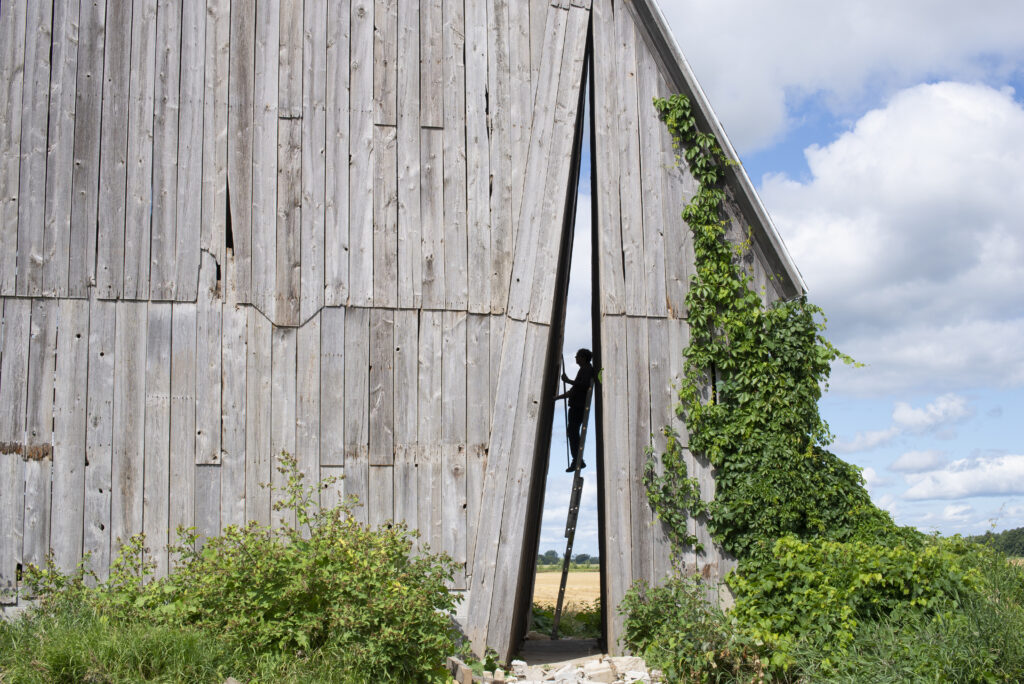

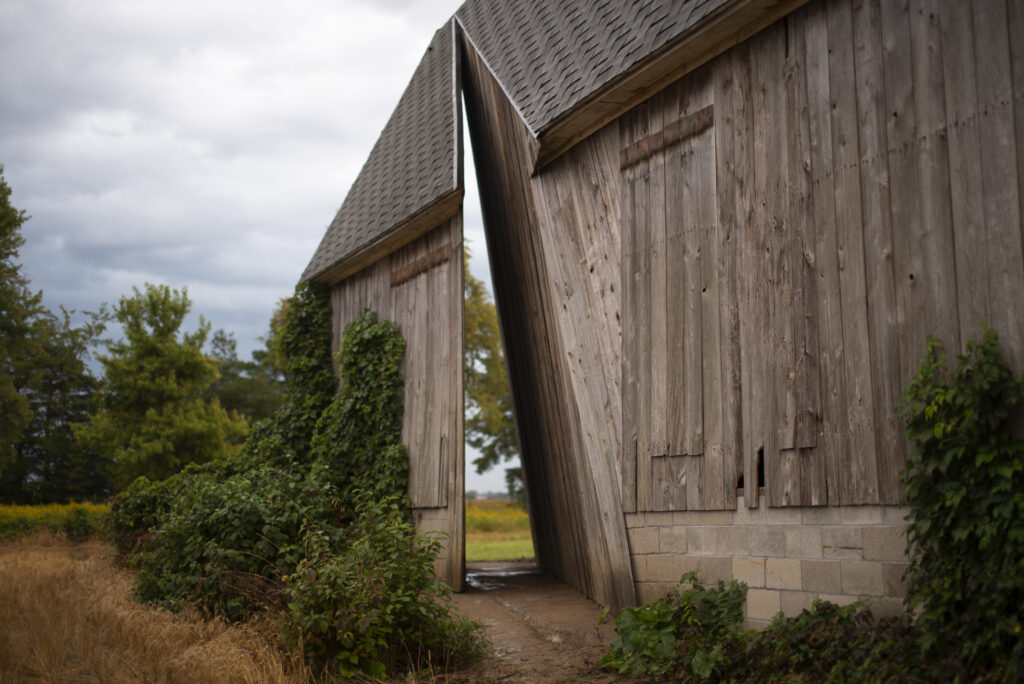
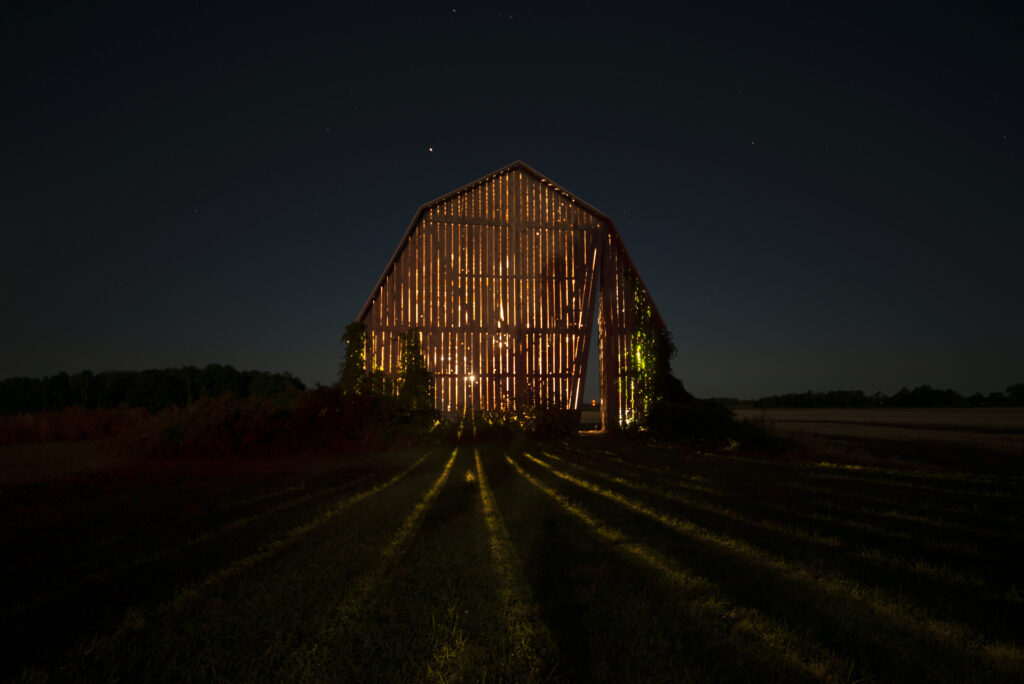
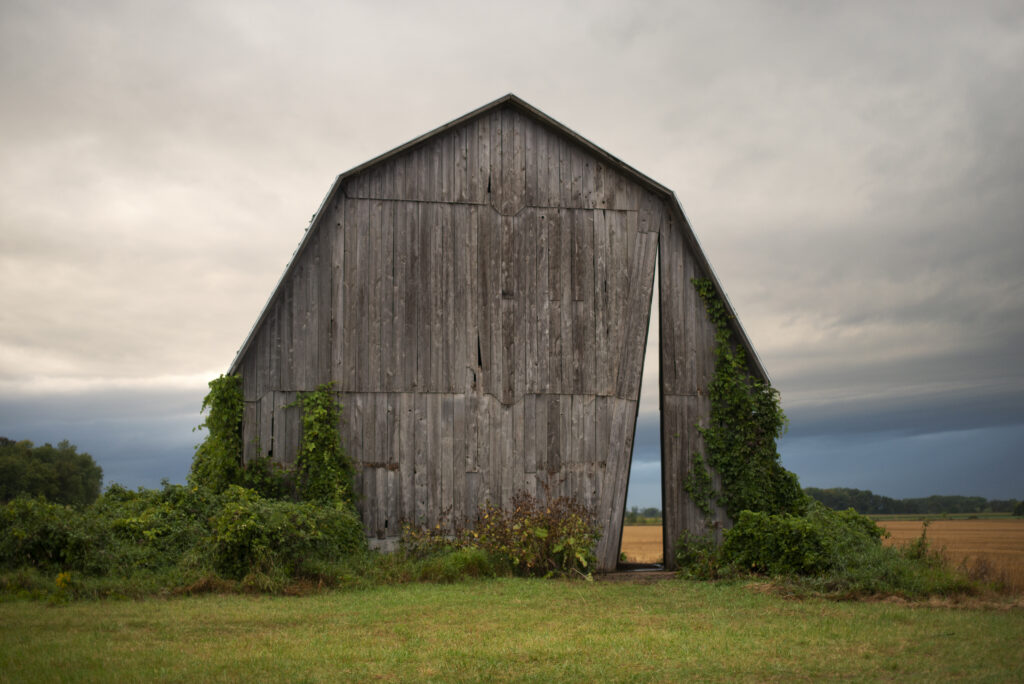
Then, in 2019, Catie Newell of Alibi Studio and a team of more than two dozen construction professionals and volunteers collaborated to turn a barn donated by Michael Schoenhals into an artwork titled Secret Sky. Similar to Celestial Ship, the piece painstakingly incorporates original materials that were patiently reworked and replaced by hand. “The original barn, a recognizable and nostalgic form in the landscape, was left unattended but cherished as an old building familiar to the area,” Newell says. “As it was, it needed structural maintenance and attention to save it from crumbling in the near future.”
As if carved cleanly with a knife, a carefully cut passageway slices through one corner of the barn, allowing light and space through an unexpected aperture. Passersby can view the split from afar or walk through the opening, and at night, the structure is transformed into a giant lantern using solar energy collected throughout the day. After a few years, the roof began to deteriorate, and a recent fundraiser to repair it was successful thanks to generous donations from local residents, matching donors, and a grant from the Michigan Arts and Culture Council.
Currently, planning for a fourth barn is in the works, and all of the existing installations are visible from the road. You can locate them on a map on the 53 North website.
